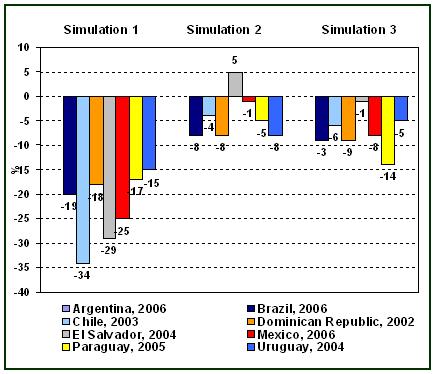|
Eliminating Gender Inequalities
Reduces Poverty. How?
Joana Costa and Elydia Silva
UNDP International Policy Centre for Inclusive Growth (IPC-IG)
Brasilia, Brazil
IPC One Pager 73, November 2008
Reprinted with Permission
Summary
The authors show how gender inequalities in the labour market
determine poverty levels and answer the following question:
which aspects of gender inequalities should be considered
a priority in the design of public policies that seek to reduce
gender inequalities and poverty?
There are many ways in which gender inequalities are
present in society. Those inequalities, like any other, are intrinsically
unfair and should be fought against. In this One Pager, we show
how gender inequalities in the labour market determine poverty
levels. We answer the following question: which aspect of gender
inequalities should be considered priority in the design of public
policies that seek to reduce gender inequalities and poverty?
In order to understand the link between poverty and gender
inequalities in Latin America, we look closely at eight countries:
Argentina, Brazil, Chile, the Dominican Republic, El Salvador, Mexico,
Paraguay and Uruguay. Three aspects of gender inequalities in the
labour market are apparent in these countries. First, women have a
markedly lower rate of economic activity than men. Second, rates
of female informality and unemployment are usually higher than
those for men. Third, women receive lower hourly remuneration.
It could be argued that these observed inequalities are not produced
by the labour market, and that they simply reflect differences in
characteristics or endowments, such as education. In these countries,
however, we find no gender gap in characteristics. Even controlling
for characteristics, we find that women have a lower probability of
participating in the labour market, a lower probability of being
formal workers, and lower hourly wage remuneration.
To investigate the relationship between gender inequalities and
poverty, we simulate counterfactual scenarios in which gender
inequalities would be reduced. Their impacts on poverty levels are
then estimated. In the first scenario, women and men with equal
characteristics have the same probability of being economically
active. In the second, women and men with similar characteristics
have the same probability of being unemployed, formal workers or
informal workers. In the third, women and men receive the same
hourly remuneration for their characteristics.
The simulations are constructed independently and in a ceteris paribus
context. This methodology is essentially a partial equilibrium
exercise and, as such, it must be considered with some caveats. The
results presented here do not consider all possible consequences
regarding the simulations, and thus they do not represent a general
equilibrium in the economies under study. Nevertheless, the results
do correspond to a rough estimate of the possible costs of gender
inequalities. Moreover, they do make possible an assessment of the
relative importance of each aspect of gender inequalities in terms
of how they affect poverty levels.
 Impact on Poverty Levels
Impact on Poverty Levels
Source: Authors’ calculations based on household surveys.
The histogram was redrawn (using the same data) for readability.
The figure presents the change in the poverty incidence that would
happen in each scenario. The reduction of all three aspects of gender
inequalities in the labour market would help reduce poverty. Moreover,
the main aspect of gender inequalities to be fought against is the
comparatively low rate of economic activity among women. First, if
female participation or the labour force increases (simulation 1), the
potential reduction of the incidence of poverty would be greatest in
Chile (34 per cent) and least in Uruguay (15 per cent). Second, the
potential decline in poverty that could be achieved by equalizing
women’s and men’s probabilities of being unemployed, formal workers
or informal workers (simulation 2) would not be higher than 8 per cent.
It is interesting, however, to observe the effects in El Salvador. Since
men have a higher unemployment rate, equalizing the probabilities
increases the poverty level. This is a unique result in our simulation.
Third, poverty declines by up to 14 per cent when female and male
hourly remuneration is leveled (simulation 3).
Though it is important to eliminate others aspects of gender
inequalities, we find that promoting women’s participation in the
labour market is the aspect with the greatest potential to promote
pro-poor growth. Hence improving women’s (particularly poor women’s)
access to the labour market is an essential element of public polices.
Since caring for children increases the probability of women being
economically inactive, one important means of increasing female
participation might be to provide childcare facilities, especially
to poor women.
References:
Costa, J., E. Silva and F. Vaz (2008). “The Role of Gender Inequalities in Explaining Income Growth,
Poverty and Inequality: Evidence from Latin American Countries”, IPC Working Paper (forthcoming).
Editor's Note: See
Promoting Gender Equality: A Special Note Supporting International Women’s Day,
Brasilia, 8 March 2009
International Poverty Centre (IPC)
SBS – Ed. BNDES, 10º andar
70076 900 Brasilia DF, Brazil
The content of this page does not necessarily reflect the official views of the
International Poverty Centre, IPEA
or the United Nations Development Programme.
Copyright © 2008 by International Poverty Centre
|